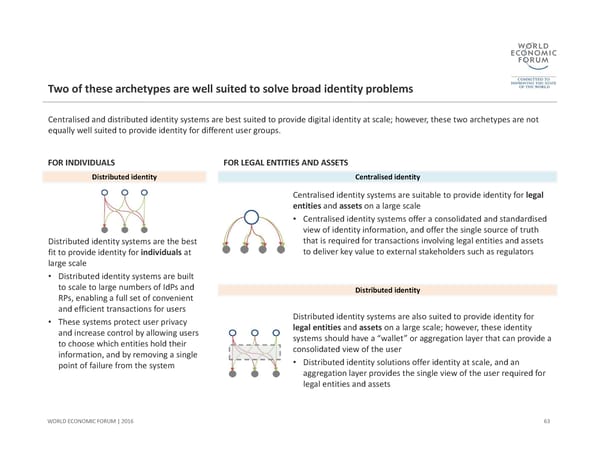Two of these archetypes are well suited to solve broad identity problemsFOR INDIVIDUALS 63 FOR LEGAL ENTITIES AND ASSETS WORLD ECONOMIC FORUM | 2016Centralised and distributed identity systems are best suited to provide digital identity at scale; however, these two archetypes are not equally well suited to provide identity for different user groups. Distributed identity systems are the best fit to provide identity for individuals at large scale •Distributed identity systems are built to scale to large numbers of IdPs and RPs, enabling a full set of convenient and efficient transactions for users •These systems protect user privacy and increase control by allowing users to choose which entities hold their information, and by removing a single point of failure from the systemDistributed identity Centralised identity systems are suitable to provide identity for legal entities and assets on a large scale •Centralised identity systems offer a consolidated and standardised view of identity information, and offer the single source of truth that is required for transactions involving legal entities and assets to deliver key value to external stakeholders such as regulators Centralised identity Distributed identity Distributed identity systems are also suited to provide identity for legal entities and assets on a large scale; however, these identity systems should have a “wallet” or aggregation layer that can provide a consolidated view of the user •Distributed identity solutions offer identity at scale, and an aggregation layer provides the single view of the user required for legal entities and assets
 A Blueprint for Digital Identity Page 63 Page 65
A Blueprint for Digital Identity Page 63 Page 65